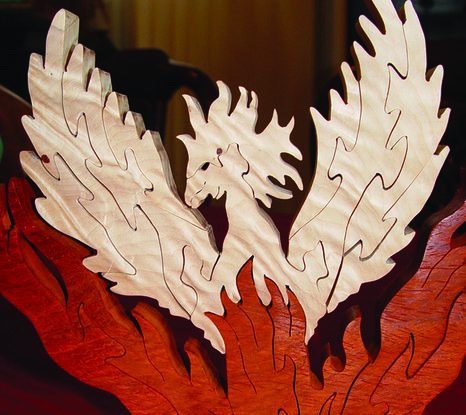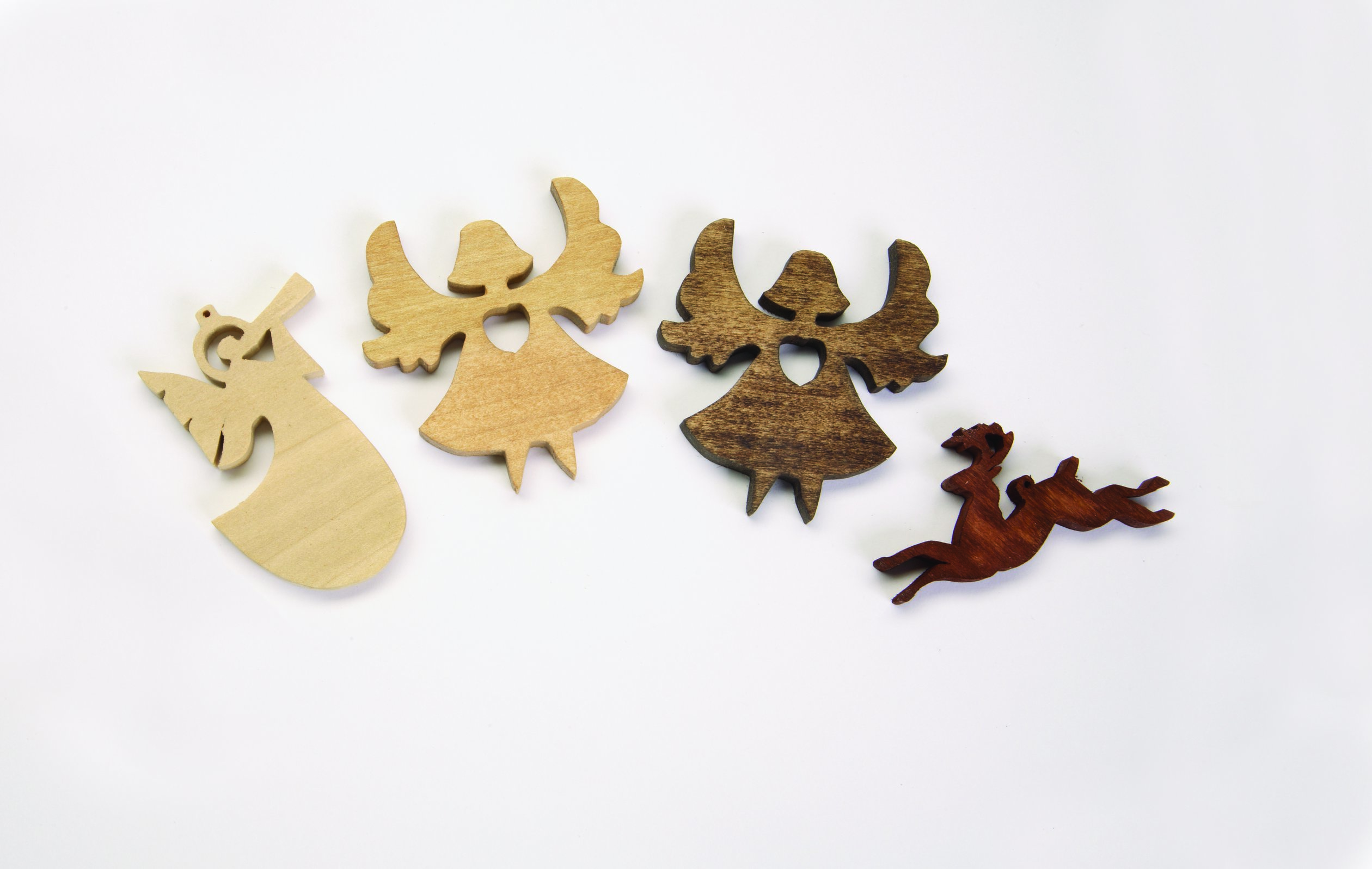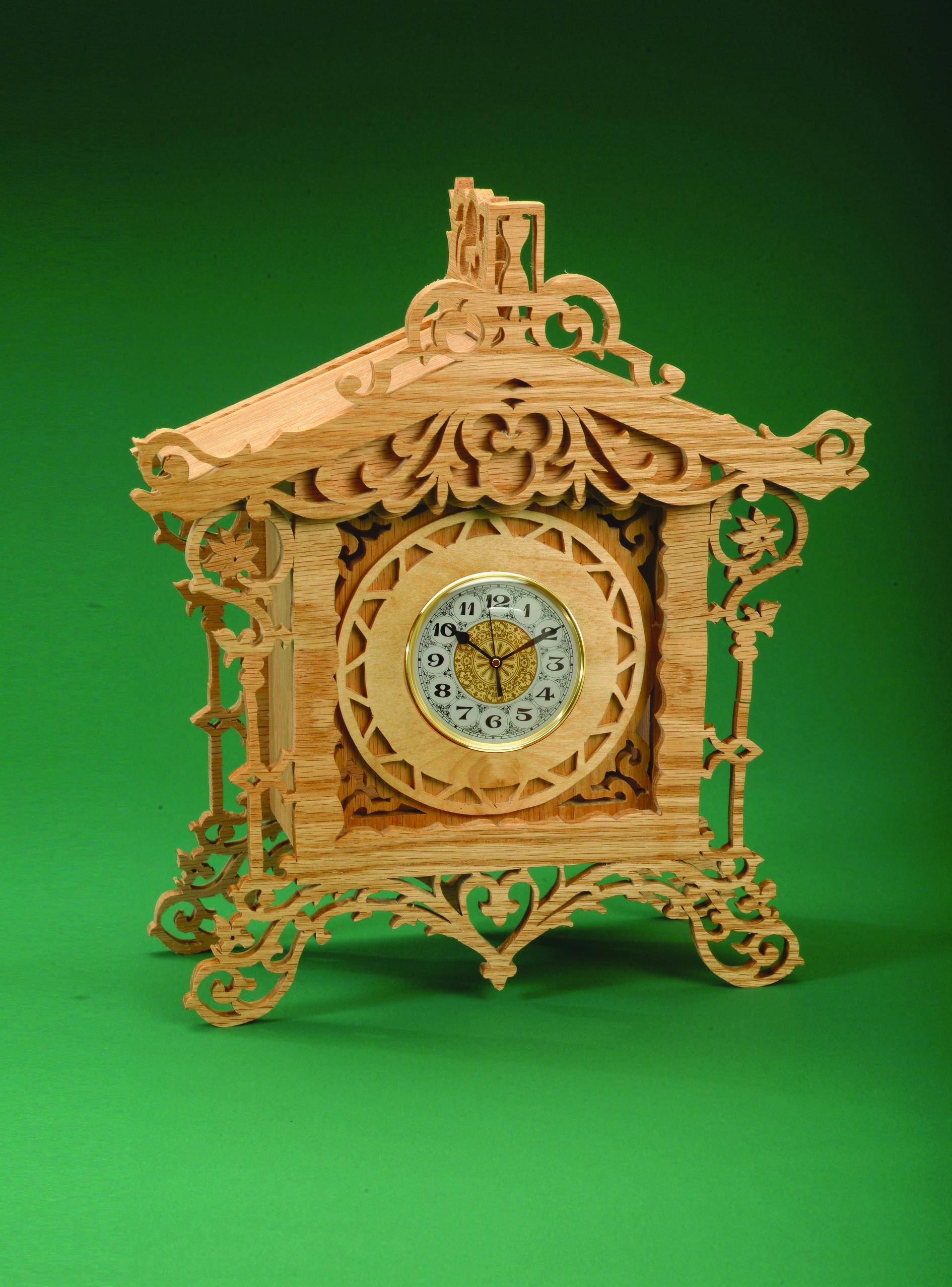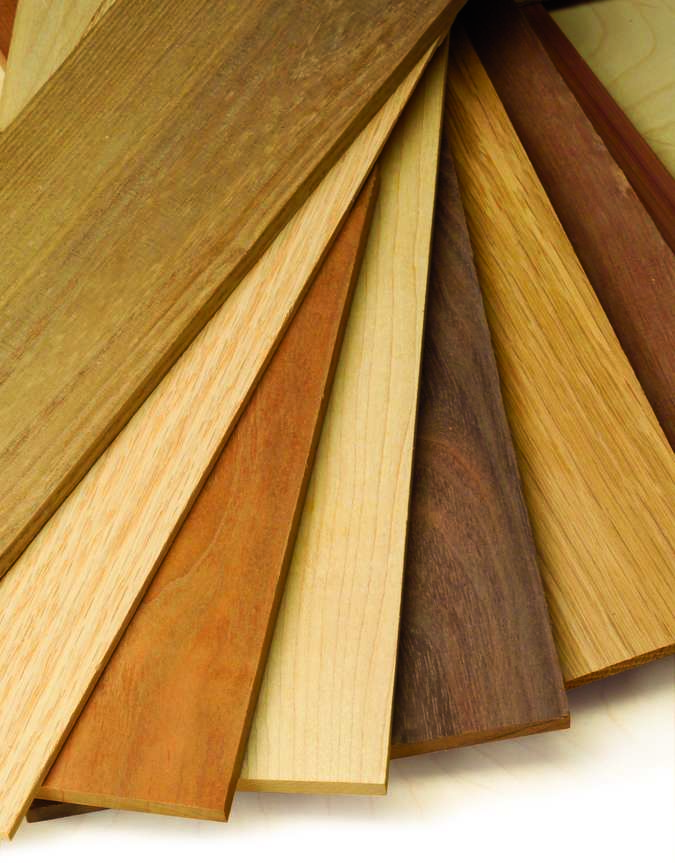Of the woods I’ve cut on the scroll saw, hickory is one of the hardest
by Bob Duncan
This article was first published in issue 26 of Scroll Saw Woodworking & Crafts.
According to the Woodworker’s Pocket Reference, hickory is one of the highest densities for domestic woods—it is harder than hard maple, beech, or oak. It is comparable with yellowheart, harder than padauk, but softer than purpleheart.
There are several varieties of hickory, but all are similar in hardness and grain pattern. They are found mainly in the eastern section of the United States. The most recognizable variety (and the best known) is the pecan hickory, which produces pecans. The most common variety of hickory is the mocknut hickory.
One of the biggest advantages of hickory is the sheer size of the trees. Most range from 1’ to 4’ in diameter and can be up to 100’ tall. That said, they are a slow growing tree, taking 90 to 100 years to reach their maximum size.
While the hardness may turn some scrollers away, the figure and grain of the wood more than make up for the difficulty when cutting. When looked at under sunlight, or any other bright light, the figure, which resembles quilted maple, simply glows. The heartwood is a creamy white color, and the sapwood darkens to a rich auburn color. Traditionally used for handles because of it’s strength, hickory glues well and expands and contracts about as much as white oak. Hickory usually costs less than comparable birdseye or curly maple, which it resembles.
Machining
Hickory tends to dull blades faster than maple or oak. Cutting the perimeter of the flames of the phoenix above took me four #9 blades. Since the flames were so delicate, I didn’t want to sand off burn marks.
One of the more useful qualities of hickory is that it bends well and holds its shape well using steam-bending techniques. That is why it is popular for chair rungs and rocking chair rockers. While this may not be a common technique for scrollers, it is something to file away for the random project that may require it.
Hickory sands well without loading up the sandpaper. When sanding hickory, start with 80-grit sandpaper, then 100-grit, and work your way up through the finer grits. It is a hard wood, so don’t skip grits. Because it is such a hard wood, it is resistant to scratching, but it does take longer to sand out any scratches or flaws. It is durable and non-toxic, which makes it a good wood for puzzles or any project intended for children.
Finishing
Hickory takes a finish well. Since it has a coarse texture, you may need to use a finer grit than normal for the final sanding. This will help the finish to be absorbed at the same rate across the entire piece. Oil finishes work well, and hickory heartwood stains well. The sapwood, since it is already a darker color, doesn’t stain as well.
Summary
Hickory is a very hard, dense wood that is more difficult to work with than other domestic woods. It is comparable with many of the exotic tropical hardwoods. It machines well, but dulls tools quickly.
It finishes well, and normally has a lovely, figured grain. The figured grain, at a fraction of the cost of other similar woods, such as quilted or birdseye maple, is one of its greatest advantages.
Discuss this material on the Scroll Saw Woodworking & Crafts forums.









